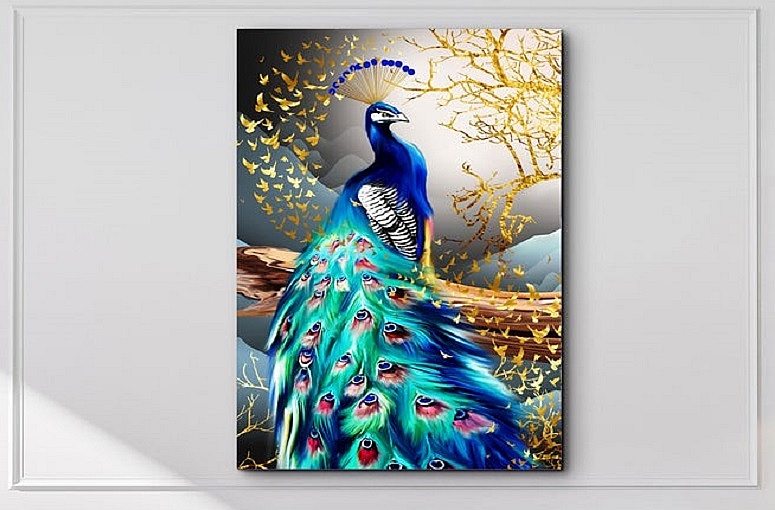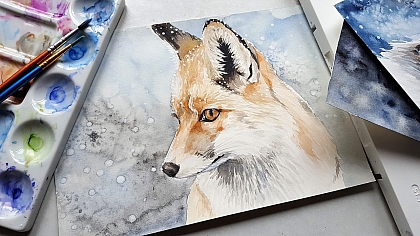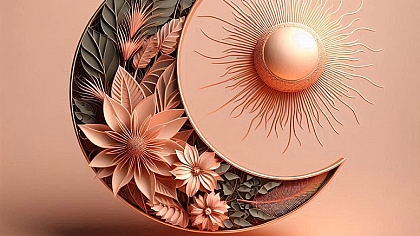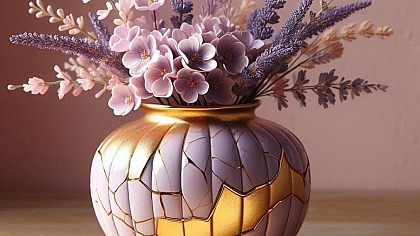
Nature's Serenity:
Paint a Serene Landscape or Botanical Scene to Bring the Beauty of Nature Indoors
The human spirit has always been fascinated by the beauty of nature. Nature has a way of calming our souls and instilling a sense of calmness, whether it's through lush green landscapes or bright botanical vistas. There is a method to bring the serenity of nature indoors, even though not everyone has the pleasure of living close to natural treasures.
Painting landscapes or botanical themes can help us connect with nature's beauty and create a calming atmosphere in our homes. Look at the therapeutic effects of painting nature and provide you with ideas related to home renovations.
The Therapeutic Values of Nature Painting
Nature has long been acknowledged for its healing capabilities for improving human well-being. Nature can lower tension and encourage relaxation, whether through the relaxing sound of waves breaking on a beach or the sight of a gorgeous mountain range. People can use these advantages through the creative and expressive medium of painting nature.
Painting, for example, has been demonstrated in studies to have a favourable effect on mental health. A special chance to become fully immersed in the beauty of the natural world is provided by painting nature pictures. It can be meditative to pay close attention to and recreate the finer elements of a tranquil landscape or floral scene, which encourages mindfulness and a sense of peace.
How to Paint the Peace of Nature: Techniques
Painting nature enables emotional release and self-expression. It offers a platform for putting one's feelings and experiences on canvas, encouraging a closer relationship with oneself and the environment. As the scene is brought to life by the brushstrokes, a sense of accomplishment and fulfilment is felt, improving self-esteem and general well-being.
Selecting the Appropriate Subject
Selecting a subject that is in tune with the mood you want to create is the first step in painting a tranquil landscape or botanical scene. Think of the things that make you feel peaceful, such as a serene lake, a soft waterfall, or a private garden.
Arrangement and Balance
Carefully arrange the elements in your painting to produce a visually appealing arrangement. To create balance and harmony, use tricks like the rule of thirds. To evoke a sense of depth and quiet, pay close attention to where focal points and negative space are placed.
Colours and Mood
The selection of colours has a big impact on the painting's mood. Earth tones and pastels are gentle, mellow colours that can evoke a peaceful mood. To convey a feeling of peace and peace, choose colder colours like blues and greens. Try different colour combinations to get the emotional response you want.
Light and Shadows
The interaction of light and shadow gives your picture depth and reality. Study the various intricacies of how light interacts with the natural world and imitate them. By adding a sense of depth and stillness, shadows can improve a scene's tranquillity.
Capturing Textures
From the delicate petals of a flower to the hard bark of a tree, nature is full of fascinating textures. Pay close attention to these features and employ a variety of painting styles to accurately depict them. Try different brushstrokes and texture media to give your artwork more life and depth.
Initiating Movement
Peace does not necessitate total stillness. To give your picture a dynamic feel, include elements that imply movement, such as rushing water or waving branches. This will increase the atmosphere of quiet and produce an eye-catching aesthetic effect.
Simple Advice for Beginners
Painting peaceful landscapes or botanical scenes is a chance to take a break from the fast-paced and reconnect with the peace and beauty of nature. By incorporating these works of art into our living spaces, we bring the calm of nature indoors and foster an environment of harmony. So grab a brush, unleash your creativity, and let nature's quiet come to life on painting. It is the best way for home renovations.
Start with Simple Subjects
If you've never painted before, start with subjects that are straightforward and don't have many minute details. Develop your abilities and self-assurance gradually before attempting more challenging scenes. Simple vistas with far-off horizons or a single plant subject might serve as excellent starting points.
Sketch and Design
Take some time to design and sketch your composition before beginning the painting process. You'll be able to improve your concepts, lay a solid foundation, and facilitate the implementation if you do this.
Learn and Watch
Spend some time learning about and watching nature. To find inspiration, visit nearby parks, botanical gardens, or natural trails. Study the hues, contours, and textures of the natural objects you want to depict in your painting. Studying the works of well-known landscape and botanical painters can also yield insightful information and inspiration.
Use a Variety of Techniques
Experiment with different painting media and techniques to discover your favourite style. Try working with oils, acrylics, or watercolours to experiment with various textures and effects. Develop a variety of skills through blending, layering, and experimenting with different brush strokes.
Patience and Persistence
The journey of painting is one of ongoing learning and development. Embrace the process and exercise patience with yourself. Allow yourself to make errors so that you can grow from them. Over time, development is possible with perseverance and consistent practice.
Modern Life and Painting
Finding moments of calm and peacefulness in the hectic environment we live in today might be difficult. We frequently long for a connection to nature and a break from the continual noise and bustle of modern life because of its demands. Painting tranquil landscapes or botanical settings is one way to use art to bring the beauty of nature into our lives. We may capture the spirit of nature and invite its peacefulness into our living spaces by making our pieces.
Designs Related to Nature
Whether they are imposing mountains, tranquil lakes, or expansive meadows, landscape paintings allow us to escape to beautiful sights. Every brushstroke aids in capturing the soft sway of the grass, the contrast of light and shadow on the mountains, or the calm of a peaceful pond. We become more sensitive to the tiny elements of nature that frequently go unnoticed in our daily lives as we immerse ourselves in the process.
When choosing a landscape to paint, take into account locations that are meaningful to you personally or make you feel peaceful. It might be a scene from a local park, a scene from a favourite vacation site, or even a fantastical setting from your dreams. You may give your artwork a stronger emotional connection and make it more meaningful and calming to look at by selecting an environment that speaks to you.
How To Choose Design?
Consider locations that are meaningful to you personally or give you a sense of peace when selecting a landscape to paint. It might be a scene from your neighbourhood park, your favourite holiday destination, or even a fantasy image from one of your fantasies. By choosing a setting that speaks to you, you may give your artwork a greater emotional connection and make it more meaningful and calming to look at.
You may give your artwork a stronger emotional connection and make it more meaningful and calming to look at by selecting an environment that speaks to you.
Botanical scenes, on the other hand, give viewers a chance to discover the complex beauty of flowers, plants, and foliage. Awe and astonishment can be evoked by the vivid hues and delicate textures seen in nature's plants. The intricate details of petals, leaves, and stems can be painstakingly captured to produce a captivating visual representation that draws the outside in.
Impact on Mood
Painting botanical scenes for home renovations urges us to take our time and pay attention to the often-overlooked tiny details. Each component of the natural world, from the delicate curvature of a petal to the tiny differences in leaf veins, compels us to appreciate the amazing complexity of the environment. We find ourselves entering a state of flow as we combine colours, blend tones and add layers to our canvas. In this condition, time seems to stand still and our troubles vanish.
In addition to enhancing our relationship with nature, painting landscapes or botanical scenes has several psychological advantages. According to studies, participating in art therapy and other creative pursuits can lower stress levels, foster mindfulness, and enhance general well-being. In particular, painting nature scenes provides a means to develop a sense of calm and find comfort in the beauty that surrounds us.
For those seeking peace and connection, bringing the beauty of nature within through painting has several advantages for home renovations. It is commonly known that painting natural settings has therapeutic benefits for mental health, awareness, and self-expression. Artists can successfully depict the peacefulness of nature on canvas by utilizing a variety of methods such as composition, colour, light, and texture.
Steps in the artistic process for beginners include planning compositions, practising various techniques, and beginning with straightforward subjects. Painting is a skill that develops over time with devotion and practice, therefore patience is an essential trait to cultivate.









